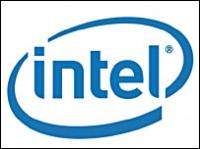Intel to debut Core 2 Duo chips in August

Despite the inevitable complaints and grumbling from some quarters, change is a necessary thing -- especially in the microprocessor industry. This August, Intel will release the Intel Core 2 series of chips. The eighth generation of the x86 processor line, the new chips will bring a slew of new features to the presently available hardware, touching up old ideas as well as bringing new ones to the table.
The new series, priced from $150 to $999 depending on model, configuration and features, breaks from historic chip design. In the past, the typical move for a new processor was to increase the unit's clock speed, pushing it to run faster and invariably hotter.
Over the years, similar ideas were tried with multiple processors on the same logic board synched to work towards a single task. While this provided some improvements, the new push has been for multiple processor cores on one chip running at lower temperatures. Such changes allow for additional technologies to be built into the chips themselves.
The Core 2 series will include several new technologies, including the new Intel Core Microarchitecture, which will replace the previous NetBurst architecture that's been used for Intel chips since 2000. The new design will produce far less heat than the NetBurst-based products and provide far better performance per watt as well as improved scalability.
In addition, the new chips will feature both 32 and 64 bit support, which is becoming more prevalent in operating-system structures. Full Virtualization Technology will allow the chips to interact with a wide range of hardware. A new Execute Disable Bit feature will both set aside areas of the chip's memory for either storage or processor instructions or data storage alone. This segregation, though new, can help prevent improve system security by preventing buffer overflow attacks, which in the past have been used to remotely override large computer networks.
Finally, a group of 16 new instruction sets will allow for new functions to be performed while the inclusion of a technology known as SpeedStep will allow the unit to be dynamically changed by system software to both allow for better performance and reduce heat output when higher performance isn't necessary.
The first of the Core 2 series, the Core 2 Duo processor, codenamed "Conroe," is slated for release July 27. The chip is intended for desktop models and is cited as using 40 percent less power than Intel's Pentium D processor.
Also slated for release July 27, the Conroe XE will replace the Pentium 4 Extreme Edition and its dual-core cousin. The Conroe XE will run at a clock speed of 2.93 GHz and be priced at $999.
Due for release in August, the Merom is the mobile version of the Core 2 Duo processor and will replace the current Core Duo line. The unit will include the same features as the other processors but is designed around lower power consumption, which is critical in the notebook market. The chip will be available in 1.66 GHz, 1.83 GHz, 2.0 GHz, 2.16 GHz and 2.33 GHz configurations.
The Allendale, available in the fourth quarter of this year, will be the lower-end version of the Core 2 Duo processor line. The chip will run in 1.6 GHz, 1.86 GHz and 2.13 GHz configurations. The unit is designed for lower-priced desktops and the entry-level user market.
Faster clock speeds are also aided by larger level 2 caches, which set aside data instructions for processing. These caches, which have been upgraded to 4 megabytes on the higher-end versions of the Core 2 Duo chips, have helped provide a series of impressive benchmarks, surpassing rival AMD's chips in independent reviews of the new product line.
From a speculative point of view, the new chips have been gauged as the most likely candidates for Apple Computer's new professional tower line, which is due for release later this year. Currently in the middle of a full transition to Intel components throughout 2006, the Core 2 Duo series has been seen as a good replacement for the IBM-manufactured G5 processors and allow for lower power requirements and heat output.
"On the desktop, individuals like gamers and high end users have been disappointed with Intel's offerings. Initial reports about what Conroe will do shows that they won't just catch up, but exceed the things AMD's done on the desktop," said Steve Baker, vice president of industry analysis for the NPD Group, an independent consumer research firm.
"AMD has been known as a scrappy, competitive opponent. Sometimes Intel misses smaller opportunities since they're looking at the bigger picture," said Baker. "AMD has taken advantage of the smaller position in the market."
Baker then pointed out that Intel will also boil new technologies into its products such as improved graphics and extended wireless capabilities, making money from both the processor and the rest of the components within a standard PC.
"I think the 4 megabyte level 2 cache will made a big difference in performance across a wide range of applications, and the drop in prices across the board is something consumers will appreciate," said Duncan Stanley, 24, a hardware consultant in Dallas. "Also, rumors of great overclocking potential have enthusiasts welcoming the new processors."
Copyright 2006 by United Press International





















